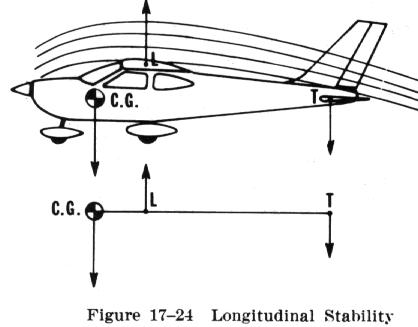Eh, reading a bit further my understanding of CL is a bit skewed.
The start to unconfusing oneself is to use the right terminology. The term "center of lift" doesn't have any real meaning in the aerodynamic literature...you mainly only see it in pilot training publications. There are two similar terms that have actual meaning:
- center of pressure
- aerodynamic center
The center of pressure moves with AoA. The CP moves backward with decreasing AoA and moves forward with increasing AoA. Its forward limit is approximiately the 1/4 chord point.
If the CP didn't move, then it would be true that the CG must be in front of the CP in order to have a stable aircraft. However, the CP
does move, so you might have the CG in front of the CP at one AoA, but an increase in AoA will put the CG behind the CP, since the CP just moved forward.
That's no good.
That's why the discipline of stability and control uses the concept of the
aerodynamic center. This is located at the 1/4 chord point and doesn't change with AoA. As a first approximation, the CG must lie ahead of the aerodynamic center in order to have a stable aircraft. However, even this isn't the whole truth, because we are only talking about the wing here, when in reality the wing is attached to a fuselage and tail section. Adding these other components to the wing creates a whole new aerodynamic center for the airplane which is called the
neutral point. The CG must lie ahead of the neutral point for the airplane to be stable, but this point may well lie behind the aerodynamic center of the wing alone.
I always thought of it like the CL moved ahead of the CG when pitch up because I imagined the CL to be pivoting around the CG.
Keep in mind that the CP and AC are aerodynamic concepts and they have no "knowledge" of where the CG lies. The best we can do is place the CG in relation to where we know the AC lies.
If the CL was ahead of the CG, the a/c would have to be pitching up
If we replace the CL with AC, this may well be true, but consider too that lift acting ahead or behind the CG is not the only aerodynamic force producing the pitching motion.
And in straight-and-level flight, the CL is located slightly behind the trailing edge of the wing, not the CG.
Assuming you mean CP when you say CL, this would likely be highly aircraft dependent.
If you want to read more accurate info on the subject, google "aerodynamic center" or "aircraft neutral point".


